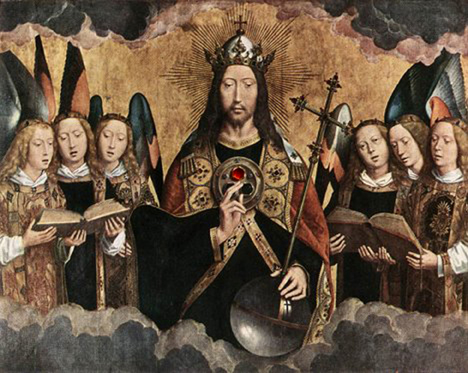Nicolas Roerich Flag of Peace Museum
A great ally and benefactor of the samurai route

Where there is Peace, there is Culture; Where there is Culture, there is Peace. - Nicholas Roerich (1874-1947)
The Nicolas Roerich Peace Flag Museum is one of the major benefactors of the Samurai Route project and that is why we want to tell you a little more about the peace flag that we will carry on the motorcycles and about its creator, Nicolas Roerich.
The museum is located in the mountains of the Basque Country and welcomes during the summer weekends all those who are lovers of the union between East and West, in its cultural, philosophical and spiritual aspects. Paintings of the Roerichs, Agni-Yoga, India, Full Moon Group Meditation, Radiesthesia-Radionics, Spiritual Adventure Travel, Book Readings, Walks in the countryside. You will find all this and much more in Leonardo and Petri's Nicolas Roerich Lodge.
The Banner of Peace is a symbol found all over the world, it has existed since time immemorial. No one can claim that it belongs to a particular religion, group or tradition, and it represents the evolution of consciousness in its various phases, having a completely universal character.
In India it is the most ancient of symbols, Chintamani, a symbol of happiness; we also find it in the Temple of Heaven in Peking; it also appears in the Three Treasures of Tibet; on the Chest of Christ in the famous painting of Memling; in the [Madonna of Strasbourg](http://www. fundacionpea.org/arte/madonna.JPG), on the shields of the Crusades and the coat of arms of the Templars; we also see it on the blades of the famous swords of the Caucasus, known under the name of "Gurda".
It appears as a symbol in a large number of ancient philosophical systems. We find it on the insignia of Genghis Khan and Rigden Djepo; on the "Tanka" of Tamerlane (Timur Lang) and on the coat of arms of the Popes. It is also found in the works of ancient Spanish painters and Titian, on the ancient icon of St. Nicholas of Bari, and on that of St. Sergius and the Holy Trinity. And also, frequently, on Buddhist flags. This same sign is found marked on Mongolian steeds. Nothing could be more appropriate to group the races than this symbol, since it is not a simple ornament, but a sign that carries in itself a deep significance.
When it is a question of defending the treasures of the world, no better symbol could be chosen, for it is universal, of unlimited antiquity (one of the oldest in the world) and carries within itself a meaning that will find an echo in every heart.
Its three spheres were analyzed by Nicholas Roerich, the designer of the Banner of Peace, as the synthesis of all arts, all sciences and all religions within the circle of culture. He defined culture as "the development of man's creative potential". He believed that "the achievement of peace, through culture, is a goal to be realized through the positive effort of the human will"_.
Wherever the Flag is displayed it recognizes the great achievements of the past, present and future inscribed in the ring of eternity. It encourages the individual to strive toward the realization of his highest potential, embellishing all aspects of life; it encourages each person to take responsibility for the evolution of the planet. It signifies the builder of peace; and symbolizes the transformation of the individual and society. It represents cooperation - the cornerstone of the emerging planetary culture - in all aspects of human activity.
Nicholas Roerich was a world-renowned artist, philosopher, archaeologist and writer. He created an international treaty, the Roerich Pact and the Banner of Peace. He stipulated that the Banner be flown over all historical monuments and educational, artistic and scientific institutions to indicate special protection and respect in times of war and peace. It recognized that cultural treasures are of permanent value to all people as the common heritage of mankind.
The Covenant was presented by Roerich in New York in 1929 and merited nomination for the Nobel Peace Prize. On April 15, 1935, President Franklin D. Roosevelt presided over a ceremony at the White House in Washington, D.C., at which twenty Latin American countries joined the United States in signing the historic document, among them Spain.
Nicholas Roerich said: "Positive creativity is the fundamental quality of the human spirit. Let us welcome all those who, overcoming personal difficulties, impel their spirits in the task of building Peace, thus guaranteeing a radiant future".
More information at: http://shambala-roerich.com